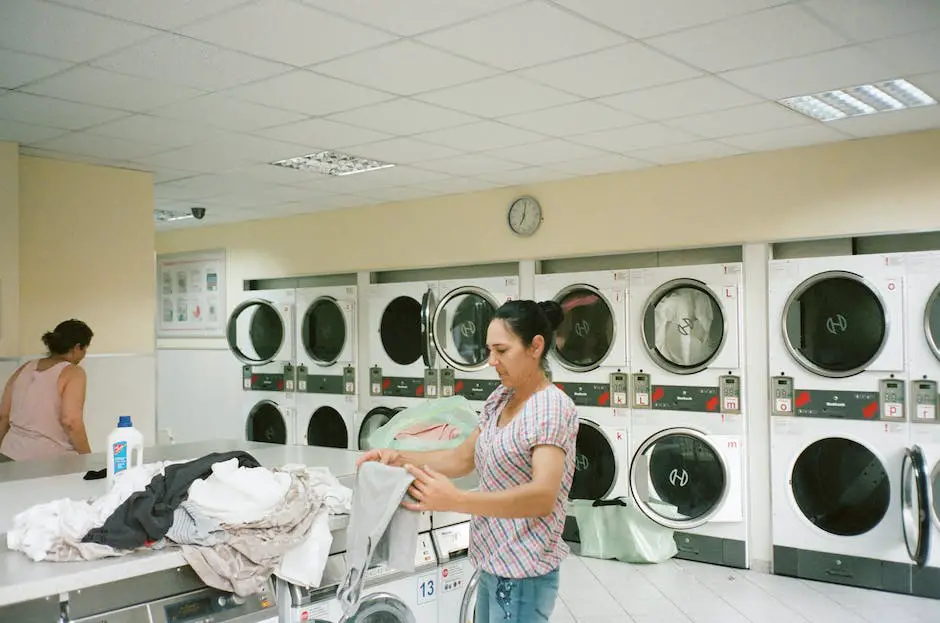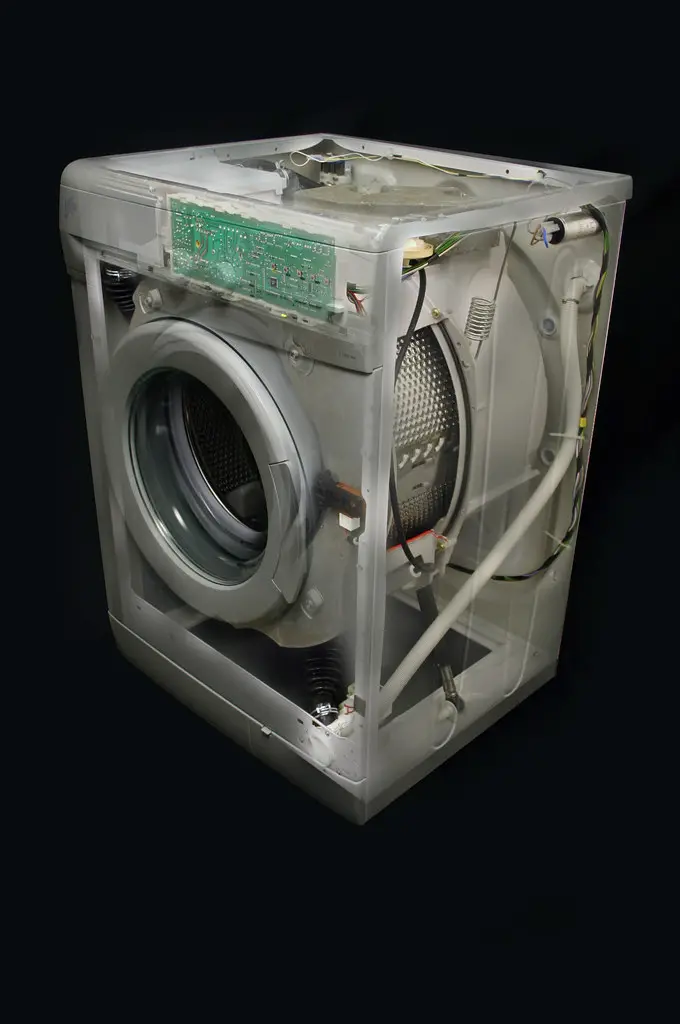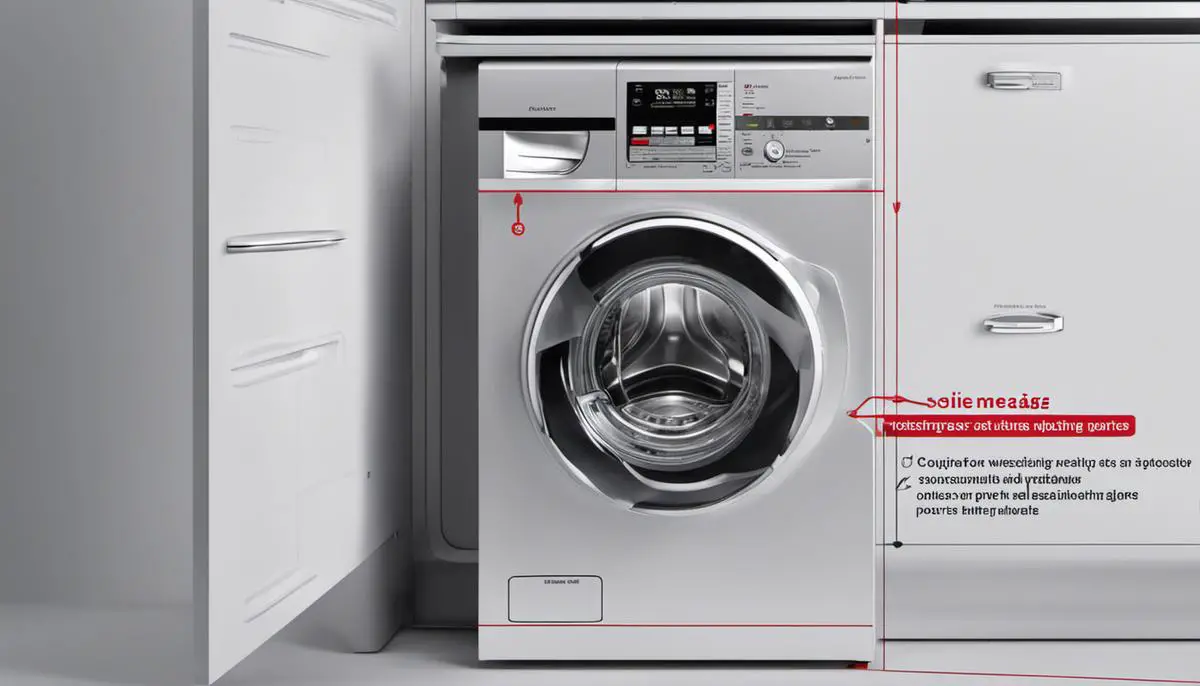There’s nothing quite as frustrating as discovering a puddle of water in your laundry area, most especially when it stems from your trusted washing machine. As every washing machine owner knows, dealing with a leaky appliance can be stressful and time-consuming.
However, the key to addressing this common issue lies in understanding the dynamics of your machine internally and externally. This knowledge begins with the identification of the source of the leak, gaining a deeper understanding of the crucial washing machine parts and their functions, and finally, learning the process of repairing and replacing faulty components.
Identify the source of the leak
Unraveling the Mystery: Discovering the Source of Your Washing Machine Leak
Every washing machine enthusiast will eventually face the time-honored rite of passage known as a leaky washer. It can be quite the adventure, navigating the hoses, gaskets, pumps, and seals of this beloved household appliance to discover the elusive origin of the puddle forming beneath it. But for the true hobbyist, it becomes an exciting journey into the world of troubleshooting. Let’s tackle this together and find that leak!
First stop on our expedition: the water hoses. These are the primary avenues through which our washer gets its water, and over time they can succumb to wear and tear, causing leaks.
Ensure the connection is secure by tightening with your trusty wrench. Inspect the hoses for signs of physical damage or bloating, which can lead to hidden leaks. If you spot any signs of aging, a replacement is in order.
Next up on our route, we venture into the mystical inner world of the machine, specifically the pump. The pump is a key component that drives the dirty water away.
Sandwiched between the tub and the drain, it uses a gasket to maintain a water-tight seal. Cracks, holes or a defect in the pump can lead to leakage.
Use your model’s schematic to locate the pump, and get a glimpse for any of these clear signs. If the pump is the culprit, a simple replacement should fix our leak.
If the pump checks out, continue your journey to the oft-forgotten land of seals and gaskets. They play the critical role of maintaining a watertight seal throughout various parts of your washing machine, be it the tub seal, front-load door seal, or lid seal.
Look for mineral or soap deposits which can cause the seal to degrade over time. Any signs of wear, tear, or perishing means it’s time to replace these valuable guardians of dryness.
But wait, there may be an unexpected suspect in our quest – the tub. Yes, even the fortress that holds our laundry can develop cracks, especially in older machines or those bearing heavy loads regularly.
Inspect it carefully, and if it turns out to be the source of the leak, consultation with an appliance repair technician might be necessary, as replacing the tub can be quite an involved process.
Having journeyed through the hoses, pump, seals, gaskets, and tub, you’re well on your way to solving the enigma of your leaking washing machine. With each step, the heart of a true appliance hobbyist beats a little faster, eager to solve the problem and restore the machine to its rightful status as the workhorse of your laundry.
Being familiar with every nook and cranny of your washing machine, being able to gauge its health, and being your household’s go-to laundry machine doctor, that’s the joy of this hobby. It’s more than just a machine, it’s a trusted companion in this everyday chore of life.
So, put on that headlamp, grab your trusty toolbox, and imbibe the sense of satisfaction that only a true washing machine enthusiast can experience by getting right to the heart of the issue.
A leaking washing machine is not just a malfunction to be dreaded or feared, but an invitation into a deeper understanding of this incredible appliance. Embrace the journey, learn from it, and remember – every leak tells a story!

Understanding washing machine components
Quite naturally, we’ve valorously ventured into the domain of determining leaks in the washing machine from a beginner’s perspective until now. However, a pro would say, the quest doesn’t quite stop there! Now let’s delve further into the nitty-gritty nuances that can make a washing machine spring a leak.
The door seal or rubber gasket is an indispensable part of front-loading washers. It makes a waterproof seal around the door preventing water from escaping.
Over time, the door seal might harden, get deformed, or even rip, warranting a replacement. Hunt for telltale signs like streaks of water or soapy traces around the door to diagnose a faulty door seal.
For our top-load enthusiasts, the tub cover gasket is a part to keep an eye on. This tub cover, along with its trusty companion, the gasket, forms a secure seal to prevent water leakage.
Any crimp or warp in the arrangement could potentially lead to calamitous consequences – read: water everywhere, and not in a fun way.
Next in line, machines with dispensers for fabric softeners and bleach also require a secure pathway to deliver these fluids safely into the drum. A cracked dispenser or a clogged line could cause leaking that can easily be mistimed with the end of wash cycle spillages. So, don’t forget to check these seemingly innocent culprits as well.
If your machine doesn’t stop filling with water, you could be looking at the incontrovertibly evident sign of a faulty water level switch. This unassuming component controls the water levels in the wash tub.
When broken or out of calibration, it can cause the washer tub to overflow. A dripping drum is a dead giveaway of this issue.
Paving the way to advanced territories, check the counterweight. Yes, you read it right! Washers house heavy concrete weights to counterbalance the spinning drum.
They’re typically bolted onto the drum’s exterior. If one gets loosened or dislodged, it could puncture the outer tub causing a leak.
Finally, faulty connections, and clogged or loose drain hoses behind the machine could also cause leaks, leading you astray in your diagnosis. Hence, pull your machine away from the wall and inspect those pipes to ensure they are sealed, kink-free and not blocked by lint.
As keen washing machine enthusiasts, learn to love these challenges and embrace them as essential stepping stones in deepening our connection to this marvelous invention. So the next time your washer springs a leak, stand tall and say, “Bring it on!”
The world of washing machine maintenance is your oyster, and each problem, a pearl of wisdom. Happy troubleshooting, everyone!

Repairing and replacing faulty components
As every washing machine devotee knows, the love of the hobby extends even to the quirkier aspects of maintaining your machine, not least of which is tracing the source of a pesky leak.
But, don’t despair, for each issue faced is another opportunity to dive a little deeper into the fascinating world of washing machines. To support your journey, what follows is a guide to further investigate potential culprits of leaking problems and how to replace or repair them when they are identified.
For fans of front-loading machines, there’s a sneaky spot that can often be the source of a leak. That’s right, the door seal – or as it’s formally known, the rubber gasket.
These can often suffer from wear and tear, leading to water seeping out. Keep a keen eye for any signs of degradation or perforation, and if spotted, replace it promptly with a new one.
The installation of a new door seal can be quite a delightful experience, as you’ll have the chance to meet your machine a bit more intimately.
Now, if your enthusiasm leans towards top-loading washing machines, the tub cover gasket could be your Achilles heel. This essential component, if faulty, can lead to leakage during the spin cycle. Fixing a leaking top-load washer gasket needs patience, precision, and a new gasket, of course!
Next on our wonderful expedition into the world of washing machine leaks are the dispensers. These little containers for fabric softeners and bleach can, over time, suffer from clogs or cracks, leading to unwanted puddles on the floor.
Don’t overlook them in your investigations! Plan regularly to clean these dispensers to avoid clogs, but if cracks are the culprits, replacing them becomes necessary.
Turn your gaze next to the water level switch. If it malfunctions, your washer might fill incessantly, clearly a water-overflow catastrophe in the making. A nifty voltmeter will assist you in diagnosing if it’s functioning correctly; if not, swap it out for a new one.
The counterweight in your beloved washer also needs your attention. If it’s cracked or unattached, water can leak out. Delving into your washer to reattach or replace the counterweight will surely give more insight into its functionality.
Lastly, close your investigative pursuit by inspecting connections, drain hoses, and check for any clogs or loose fittings. Gently tighten any loose connections and replace clogged or cracked hoses to ensure a smooth functioning, leak-free washing machine.
So, there you have it! The world of washing machine maintenance indeed holds continuous surprises and opportunities for further learning.
Arm yourself with determination and your tool kit, and embrace the satisfaction of getting your hands dirty – a joy known best to all those who genuinely enjoy this unique hobby. Remember, each leak is a new adventure in your washing machine journey! And on you go!

By combining patience, careful observation, and a basic knowledge of washing machine components, tackling a leaky washing machine becomes less daunting.
Whether it’s the washer’s exterior, the bottom, or underneath are the source of the leak, or the water inflow valve, pump, and hoses have faulted, you now have the aptitude to identify, fix, or replace these components safely and efficiently.
The proactive approach detailed in this knowledge guide not only prevents future leaks but it also ensures the longevity of your washing machine, giving you peace of mind every laundry day.

